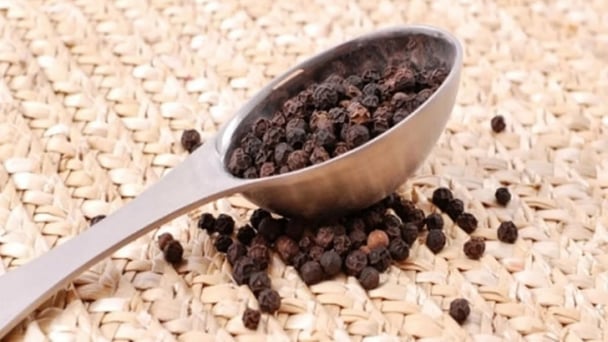April 16, 2025 | 10:47 GMT +7
April 16, 2025 | 10:47 GMT +7
Hotline: 0913.378.918
April 16, 2025 | 10:47 GMT +7
Hotline: 0913.378.918
The global fertilizer industry could face some big changes ahead. Historically, volumes have grown steadily over the past decade at about 1 percent per annum, with the commodity fertilizer market reaching $145 billion as of 2023.1 However, by 2040, several interconnected shifts across the agricultural sector could disrupt this slow and steady growth.
In a business-as-usual scenario, we anticipate demand to grow at approximately 2.1 percent per annum through 2027 to account for the growing global population and increased caloric needs, with capacity growing at about 2.5 percent per annum. However, “business as usual” may not be how things shake out. In the future, new factors such as technology, climate change, changing consumer preferences, and more could cause meaningful demand shifts.
In this article, we highlight a number of different drivers that could potentially impact demand in the next 15 years, comparing them to projected business-as-usual volumes. The impacts laid out in this analysis are not additive across drivers. Each scenario looks at one driver in isolation: actual 2040 volumes will take into account drivers outside the scope of this analysis as well as second order effects, including changing farmer economics. Understanding these different trends and their potential effects can help stakeholders in the fertilizer industry ask strategic questions to prepare for what’s ahead.
Historically, volume growth in the fertilizer market has been propelled by steadily increasing global application rates to support expanding crop production (see sidebar, “The fertilizer industry today”). The main reason for this steady growth is that farmers’ purchasing behaviors have been relatively inelastic, except during periods of significant price spikes (plus or minus 50 percent). This is because farmers view fertilizers as table stakes to achieve high yields, with farmers in the United States, the European Union, and Brazil spending as much as 25 to 40 percent of their annual budgets on fertilizers—more than any other input.
Steady underlying drivers of population growth and improving calories per capita are expected to continue fueling future growth. However, we have identified several potential disruptors that could cause sizable swings to projected 2040 volume demand under business-as-usual projections (exhibit). While in reality these drivers will not materialize in isolation, we analyze them one by one to size the relative impact of each.
Precision agriculture uses data analytics (including machine learning and AI), geospatial data, and various sensors to optimize the application of fertilizers, ensuring crops receive the exact nutrients they need, when they need them, and where they need them. Precision agriculture techniques include on-field soil sensors, variable-rate fertilizer and pesticide application, and sprayer section controls. Today, 20 to 30 percent of farmers globally have adopted precision agriculture hardware, and an additional 5 percent of farmers anticipate adopting it in the next two years.3 This technology has the potential to reduce overall fertilizer volumes by up to 5 percent, driving increased application efficiency without compromising on yields and reducing input costs for farmers.
Next-gen inputs, particularly biological alternatives such as biostimulants, have the potential to offset commodity fertilizer usage. Biostimulants include products such as nitrogen-fixing biologicals, beneficial bacteria and fungi, organic acids (for example, humic and fulvic acid), protein hydrolystates (for example, amino acids), and seaweed extracts and botanicals. Biostimulants have the potential to increase the availability of nutrients to crops, with the aspiration of higher yields and lower environmental costs. They also can play a role in reducing emissions, particularly compared to nitrogen fertilizers, given that they do not require ammonia production in their manufacturing and have lower on-farm emissions profiles. Today, many farmers are trialing biostimulants in combination with their traditional-fertilizer protocol. Approximately 20 percent of farmers globally have already adopted biostimulants, and an additional 6 percent anticipate adopting them in the next two years.4 In the United States, nitrogen-fixing biologicals are the most commonly adopted of all biostimulant products5 because these products are designed to directly offset synthetic N fertilizer needs. As adoption of these products continues to rise and their impact is proved, there is a potential to reduce 2040 volumes by 5 to 10 percent if farmers offset their commodity fertilizer needs with biologicals.
Agriculture contributes approximately 15 percent to global emissions, with N fertilizers alone accounting for approximately 3 percent of this total due to manufacturing and on-farm emissions.6 Around the world, organizations in the public and private sectors are increasingly focusing on environmental sustainability and the reduction of greenhouse gas emissions. For example, the EU Green Deal sets targets for reducing fertilizer use and increasing organic farmland, although McKinsey analysis suggests progress toward these targets is lagging behind. Industry players, particularly consumer packaged goods (CPG) companies, are setting Scope 3 emission targets to make their supply chains more sustainable. This includes increased attention on the volume and types of fertilizer applied, as well as greater emphasis on regenerative agriculture practices. Such commitments from CPG companies can have cascading effects down to the farmer level, even without government regulation. Enhanced regulations aimed at decarbonizing agriculture could reduce fertilizer volumes by up to 5 percent.
As farmers in Africa gain better access to fertilizers and other agricultural inputs—through both increased farmer profitability and improving global supply chains—there is an opportunity for application rates in Africa to grow toward global averages. Today, the average combined application rate across N, P, and K nutrients in Africa (Morocco and South Africa) is about 120 kilograms (kg) per hectare, compared with about 135 kg per hectare globally. If farmers in Africa were to apply fertilizer more in line with the global application rate, which is still lower than that of Brazil, the European Union, or the United States, this would increase global fertilizer volumes by up to 5 percent in 2040.
China and India have historically applied more fertilizers than the rest of the world. This is due to a number of factors, including the larger share of small shareholder farmers, who tend to overapply fertilizers due to lack of other inputs, such as high-tech machinery; a need to feed a growing domestic population; and subsidies for fertilizer use. For example, nitrogen-use efficiency in China is about 40 percentage points less than in the United States,7 and excess phosphorus use is about 21 percent in India and 30 percent in China, compared with only about 6 percent in the United States.8 As a result, China’s and India’s application rates are about 30 kg per hectare higher for N and P and about ten kg per hectare higher for K than the world average. China, in particular, has made strides to reduce overuse of fertilizers with the 2015 Five Year Plan, successfully reducing fertilizer consumption about 12 percent by 2020.9 If China and India moved to reduce application rates to be more in line with global averages, it could lead to a reduction in fertilizer volumes by 5 to 10 percent.
Soil degradation caused by aridity, salinization, erosion, and increasing organic carbon levels could disrupt the efficiency with which nutrients are delivered to crops within the soil matrix and put downward pressure on crop yields. This could affect fertilizer use in varying ways. To offset declining soil health, farmers may need to apply more nutrients to uphold yields, increasing the demand for fertilizers by more than 10 percent. However, increasing soil degradation could have the opposite effect, reducing the overall yield potential of soils such that applying more nutrients alone will not be able to offset other degradation factors. If so, soil degradation could actually result in a decrease in 2040 volumes of more than 10 percent because applying additional fertilizer with no yield benefits would be unprofitable for farmers.
As global demand for food, livestock, and fuel grows and as rising global temperatures shift global weather patterns, land use is expected to shift, causing a projected decline in overall fertilizer volumes. Major drivers include a decline in overall yield potential, which most often cannot be overcome with higher application rates. It is possible that diets could shift away from animal proteins, resulting in lower animal feed requirements, and increasing demand for biofuels could create higher demand for bioenergy crops.10
While the focus of this analysis is on demand disruptions, markets will undoubtedly be further shaped by a number of critical supply side drivers. In particular, we anticipate seeing the following: increased raw material volatility; shifting global supply chains, especially as blue and green ammonia11 production rises; increased sustainability pressures on manufacturers; shifting geopolitics affecting global trade; and an increased push toward self-sufficiency in some regions, especially Brazil, China, and India. These trends will all increase global competition, putting increased importance on each participant’s position on the cost curve to protect margins.
Because these trends have potential to cause sizable swings in demand, leaders in crop nutrition should consider some questions to best position their businesses in a changing world:
mckinsey

(VAN) Pepper prices on April 15, 2025: Global market sees mixed fluctuations, while domestic prices remain stable, trading around VND 154,000 - 157,000/kg.

(VAN) Coffee prices on April 15, 2025, have surged globally. Domestic coffee prices rose by VND 2,600, reaching the range of VND 126,300 - 127,200/kg.

(VAN) Pepper prices on April 14, 2025, remain unchanged both domestically and globally. Domestic pepper is still trading around VND 154,000 – 157,000/kg.

(VAN) Coffee prices on April 14, 2025, is flat both domestically and globally. Domestic coffee is being traded at a range of VND 123,700 to VND 125,000/kg.

(VAN) It’s eaten with almost every meal, used to make sushi, made into sweets, fermented into alcohol and offered to the spirits at religious ceremonies.

(VAN) Pepper prices on April 11, 2025, show a slight recovery from both domestic and global markets. Prices stay at VND 148,000 to VND 150,000/kg domestically.

(VAN) Coffee prices on April 11, 2025, increased slightly domestically, at VND 117,300 to VND 119,000/kg, up by VND 1,000 to VND 1,300/kg over yesterday.